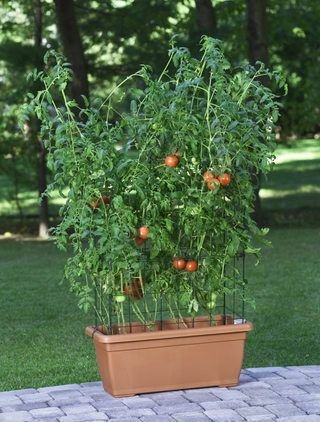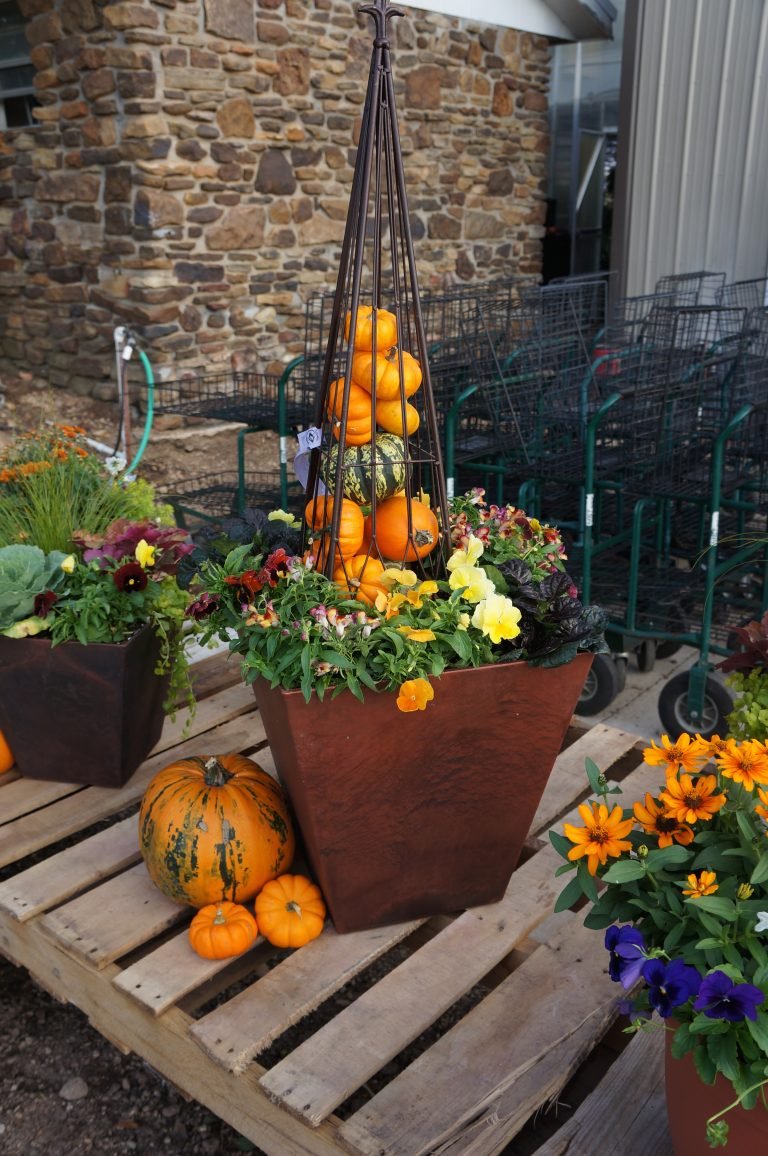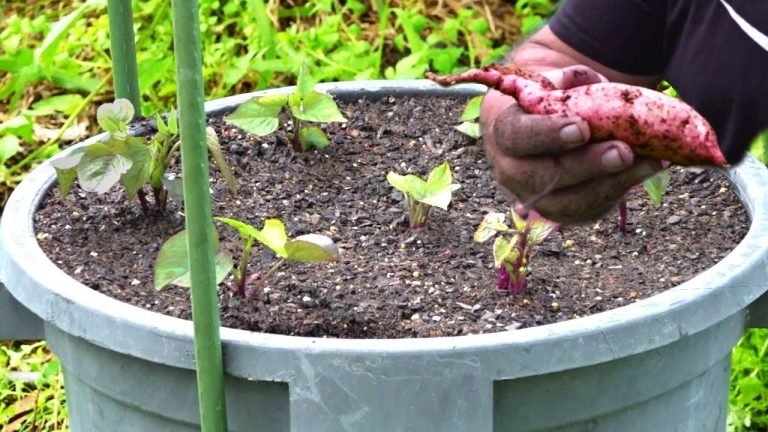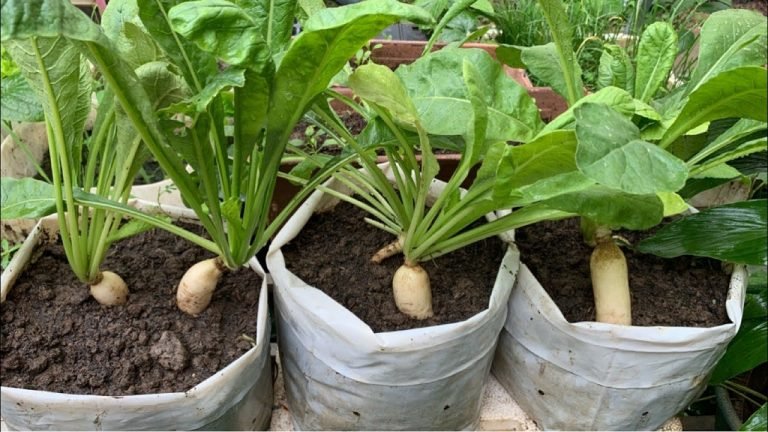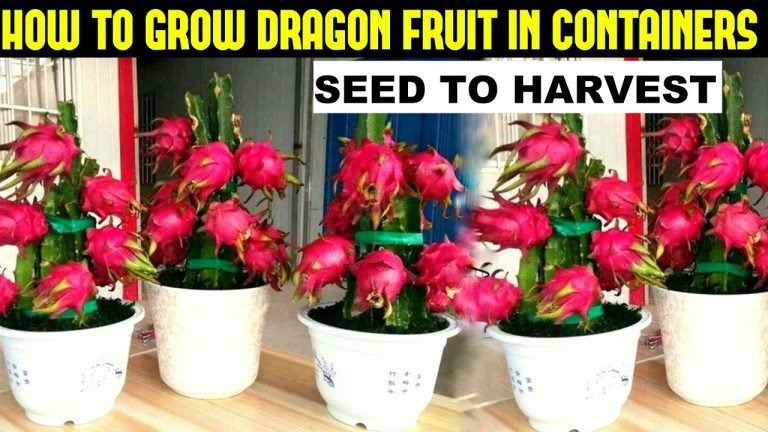how to grow grape tomatoes in a pot – [Beginners Guide]
Hey there! Are you someone who loves the idea of growing fresh produce at home, but feels intimidated by the thought of having to maintain a large garden? Well, fear not! One of the easiest and most rewarding ways to get started is by growing grape or cherry tomatoes in pots.
I speak from personal experience when I say that growing cherry tomatoes in pots is a fantastic idea. For years now, I have been growing them on my patio, and it never fails to bring me joy when I see my plants bearing fruit. Not only do they taste amazing and add a pop of color to my garden, but they are also incredibly versatile in the kitchen.
What’s great about growing grape tomatoes in pots is that you don’t need a lot of space. All you need is a sunny spot on your balcony or patio, and you’re good to go. Plus, you have the added benefit of being able to move your pots around to ensure that your plants are getting the optimal amount of sunlight and warmth.
If you’re looking for a low-maintenance gardening option that doesn’t require a lot of time or effort, then growing grape tomatoes in pots is the perfect solution. In this guide, we’ll walk you through everything you need to know to successfully grow these delicious little fruits in a pot, from choosing the right variety to troubleshooting common problems.
So, are you ready to start your own cherry tomato garden? Let’s dive in and get started!
Pot or container selection
Size and capacity
Grape tomatoes also require plenty of room to grow, so a pot that is at least 12 inches (30 cm) in diameter and 12 inches (30 cm) deep is recommended. However, a larger pot, such as 14-16 inches (35-40 cm) in diameter and 16-18 inches (40-45 cm) deep, can provide more space for the roots to grow, which can result in more productive and healthier plants.
Construction
The construction of the pot is important to ensure the health and growth of the grape tomato plant. Here are some things to consider:
- Material: Like cherry tomatoes, grape tomatoes need a pot made of durable material such as ceramic, plastic, or fiberglass. The material should be able to withstand exposure to sun and moisture. Avoid using metal or wood pots as they may contain harmful chemicals or rot over time.
- Drainage: Good drainage is crucial for the growth of grape tomatoes. The pot should have drainage holes in the bottom to allow excess water to drain out. If the pot does not have drainage holes, drill some yourself or add a layer of rocks or gravel in the bottom to aid drainage.
- Style: Choose a pot that is well-suited for growing grape tomatoes, but it can still be decorative if you prefer. The important thing is to ensure that it meets the size and construction requirements for optimal growth.
In summary, a pot that is at least 12 inches in diameter and 12 inches deep made of durable material with good drainage is suitable for growing grape tomatoes at home. A larger pot can provide more space for roots and better growth.
Make suitable soil mix
When it comes to growing grape tomatoes at home, using the right soil mix is essential for the plants to thrive. Here’s what you need to know about selecting the right soil mix for your grape tomatoes:
Type
For grape tomatoes, it’s best to use a high-quality potting mix that is specifically formulated for tomatoes. The mix should be well-draining, with good moisture retention and aeration properties. A good mix is usually made up of a combination of peat moss, vermiculite, perlite, and compost. This will provide the right balance of nutrients and drainage for your plants.
Avoid using garden soil or topsoil, as these types of soil may contain weeds, pests, or diseases that can harm your plants.
Mixture
In addition to using a high-quality potting mix, you can also add some amendments to your soil to provide additional nutrients for your grape tomatoes. Here are some options:
Compost: Adding compost to your soil mix can help improve its structure, drainage, and nutrient content.
Organic fertilizers: You can use organic fertilizers, such as bone meal or blood meal, to provide additional nutrients for your plants. These fertilizers are slow-release and provide a steady supply of nutrients over time.
pH adjusters: Grape tomatoes prefer a slightly acidic soil pH (between 6.0 and 6.8). You can use sulfur or aluminum sulfate to lower the pH of your soil, or lime to raise it.
It’s important to note that adding too much fertilizer or amendment to the soil can harm your plants. Always follow the recommended dosage and frequency on the product label.
In conclusion, choosing the right soil mix and amendments is essential for growing healthy and productive grape tomatoes at home. A well-draining potting mix with the right balance of nutrients and amendments can provide the ideal growing environment for your plants.
How to plant the grape tomatoes?
Here’s a step-by-step guide on planting grape tomatoes in a pot at home:
Choose the right pot: Select a pot that is at least 12 inches in diameter and 12 inches deep. Make sure it has drainage holes to allow excess water to drain away from the roots.
Fill the pot with soil: Fill the pot with a high-quality potting mix formulated for tomatoes, leaving enough space at the top for watering and for adding a stake or cage if needed.
Plant the grape tomato seedling: Carefully remove the grape tomato seedling from its container, gently loosen the roots, and place it in the center of the pot. Make sure the root ball is level with the soil surface. Fill in around the root ball with soil, tamping it down gently to remove any air pockets. Water the seedling well to help settle the soil around the roots.
Support the plant: Some grape tomato varieties may need support as they grow, especially if they produce heavy fruit. Consider adding a stake or cage to the pot to help support the plant. Place the stake or cage in the pot before the plant grows too large, as it can be difficult to add one later without damaging the roots.
Water and fertilize: Keep the soil moist, but be careful not to overwater. Water the soil deeply once or twice a week, depending on the weather and the size of the pot. As the plant grows, you may want to fertilize it with a balanced tomato fertilizer to help it continue to thrive. Follow the instructions on the fertilizer package for the recommended amount and frequency.
By following these simple steps, you can enjoy a bountiful harvest of delicious grape tomatoes grown right in your own home!
How to care for grape tomatoes?
Watering Requirement
Grape tomatoes require regular watering to keep the soil consistently moist but not waterlogged. Watering should be done deeply once or twice a week, depending on the weather conditions and the pot’s size. To determine whether it is time to water, check the moisture level of the soil by sticking your finger about an inch into the soil. If the soil feels dry, it’s time to water. It’s essential to avoid overwatering as this can lead to root rot, which can be fatal to the plant.
Fertilizer Requirement
Grape tomatoes are heavy feeders and require regular fertilization to produce a healthy crop. Using a balanced fertilizer, such as a 10-10-10 formula, is recommended to ensure the plant gets the necessary nutrients. Alternatively, slow-release fertilizers or compost can be used to provide a steady supply of nutrients over time. It’s crucial not to overfertilize as this can lead to excessive foliage growth, which will negatively impact fruit production.
Sunlight Needs
Grape tomatoes require full sunlight exposure to produce a good crop. It’s best to choose a spot that receives at least six hours of direct sunlight per day. If growing the tomatoes indoors, it’s essential to use a grow light to provide sufficient light.
Pruning & Training
Pruning and training grape tomatoes can help increase air circulation, sunlight exposure, and fruit production. To prune, remove any yellow or diseased leaves and any suckers that grow from the base of the plant. Training grape tomatoes to a trellis or stake is essential to support the plants and prevent them from sprawling. It also makes harvesting more manageable.
Other Care
Apart from watering, fertilizing, and pruning, there are other essential aspects of caring for grape tomatoes:
- Mulch around the plant to help retain moisture and suppress weeds.
- Pinch off early flowers to encourage root growth and fruit production.
- Inspect the plants regularly for pests and diseases, such as aphids and tomato hornworms. Early detection and treatment are crucial to prevent the spread of the issue.
- Regularly remove any dead leaves or branches to prevent the spread of disease and pests.
- Protect the plants from extreme weather conditions, such as strong winds and heavy rain.
- Harvest the tomatoes promptly to encourage more fruit production.
With proper care, grape tomato plants can produce a bountiful harvest of tasty, juicy tomatoes that are perfect for salads, sauces, and snacks.
Common problems
Other Issues
In addition to pests, insects, diseases, and poor production, there are other issues that can arise when growing cherry tomatoes in pots. These include:
Overcrowding: If you plant too many cherry tomato plants in a small pot, they may not have enough room to grow and develop properly. This can lead to stunted growth and poor production.
Nutrient deficiencies: If your cherry tomato plants are not getting enough nutrients, they may develop yellow leaves or stunted growth. To prevent this, make sure you fertilize your plants regularly and use a balanced fertilizer.
Watering issues: Overwatering or underwatering can both cause problems for cherry tomato plants grown in pots. Make sure you water your plants deeply and regularly, but avoid letting them sit in standing water.
Temperature extremes: Cherry tomatoes are sensitive to temperature extremes, so it’s important to protect them from hot or cold weather. If you live in a hot climate, consider providing some shade for your plants during the hottest part of the day. If you live in a cold climate, you may need to bring your plants indoors or cover them with a frost blanket during cold snaps.
By being aware of these common problems and taking steps to prevent and address them, you can help ensure that your grape tomatoes grown in pots at home will thrive and produce a bountiful harvest.
Harvesting & storing homegrown grape tomatoes
Grape tomatoes can be harvested and stored in a similar way to cherry tomatoes. Here are some tips for harvesting and storing grape tomatoes:
When to Harvest Grape Tomatoes
Grape tomatoes should also be allowed to fully ripen on the vine before harvesting. They will be ready to harvest when they have reached their mature color, which is usually a deep red or yellow. They should also feel firm to the touch but give slightly when squeezed. Overripe tomatoes will be too soft and will have a shorter shelf life.
How to Harvest Grape Tomatoes
To harvest grape tomatoes, gently twist and pull them off the vine. Avoid pulling too hard or damaging the plant. It’s best to harvest tomatoes in the morning when they are cool and firm.
Storing Grape Tomatoes
Grape tomatoes should be stored at room temperature and away from direct sunlight. Like cherry tomatoes, they should not be refrigerated as this can cause them to lose flavor and texture. Do not wash the tomatoes until you are ready to use them, as this can cause them to spoil more quickly. If you have a large harvest and need to store some of the tomatoes for later, you can freeze them. Follow the same steps as for cherry tomatoes by washing and drying them, placing them on a baking sheet, and freezing them until solid. Then transfer them to a resealable bag and store them in the freezer for up to 6 months.
In summary, to harvest and store grape tomatoes, wait until they are fully ripe before picking them, store them at room temperature, and avoid washing them until you are ready to use them.
Growing grape tomatoes in container – Conclusion
In conclusion, growing grape tomatoes in a pot is a great way to enjoy fresh, homegrown produce even if you have limited space. By following the tips and information provided in this guide, you can successfully grow healthy and productive cherry tomato plants right at home. Remember to choose the right pot and soil mix, provide adequate water and nutrients, and monitor for common problems like pests and diseases. With a little bit of patience and effort, you’ll be rewarded with juicy, flavorful cherry tomatoes that you can enjoy in a variety of ways. So why not give it a try and start your own homegrown tomato garden today? Happy growing!

